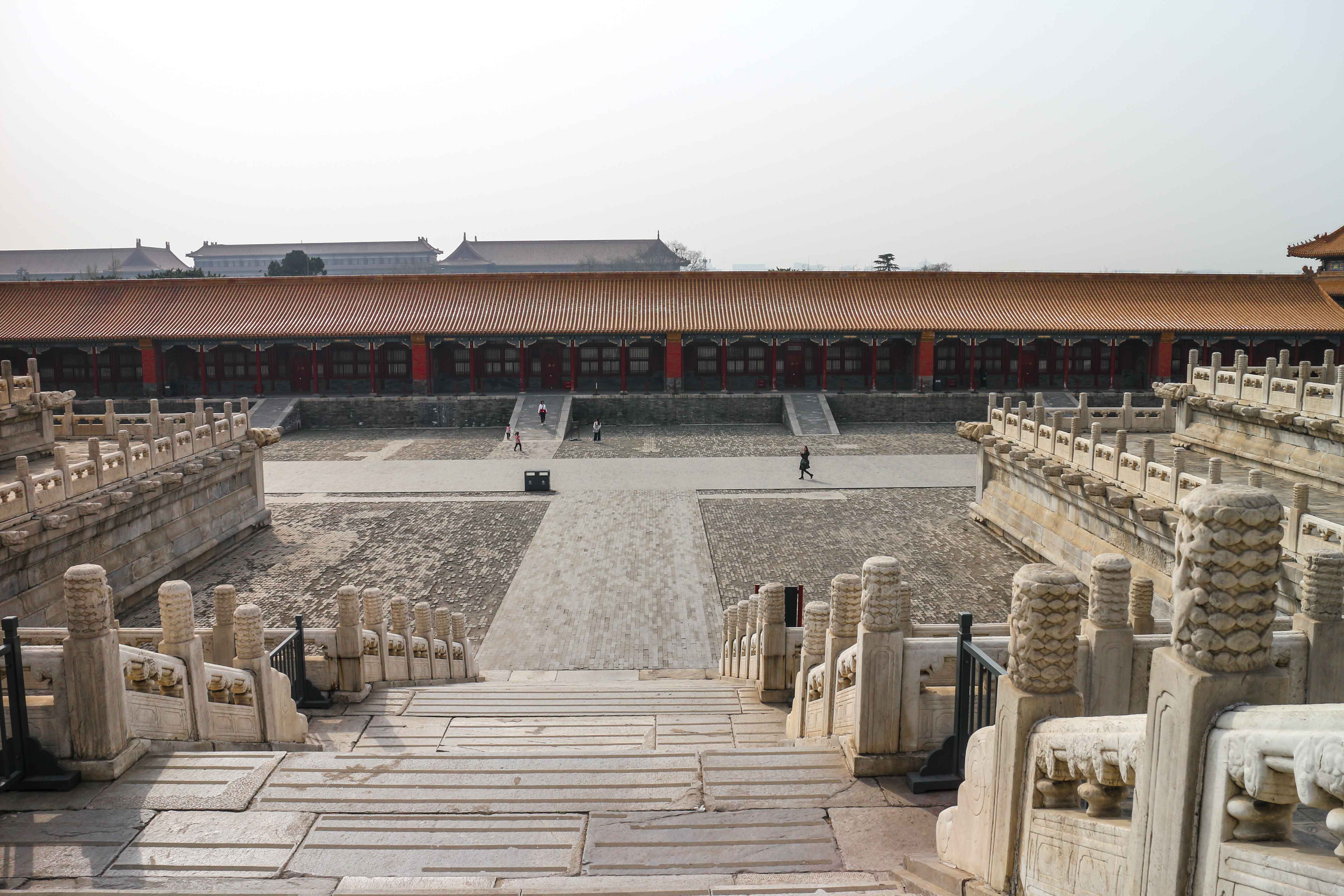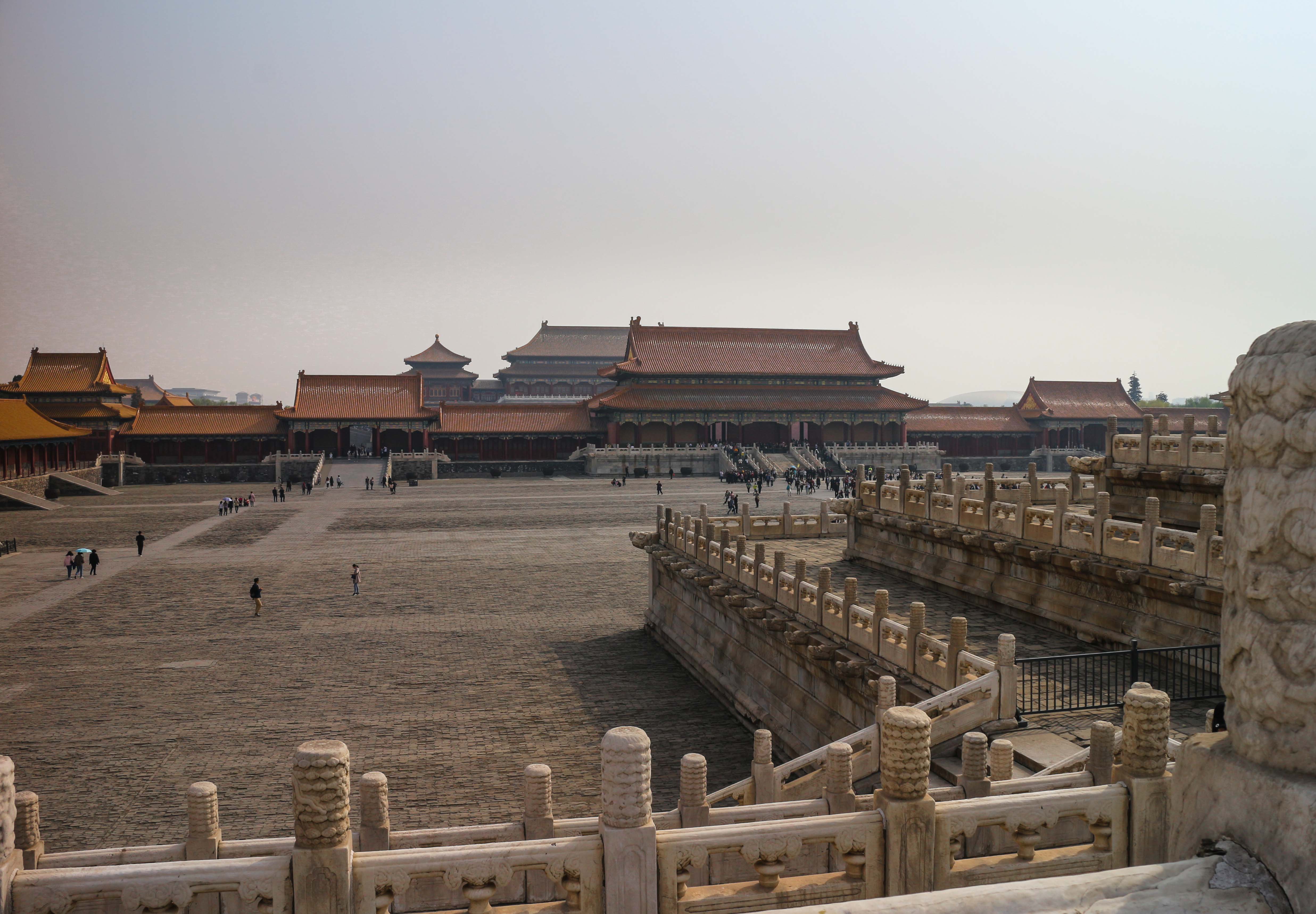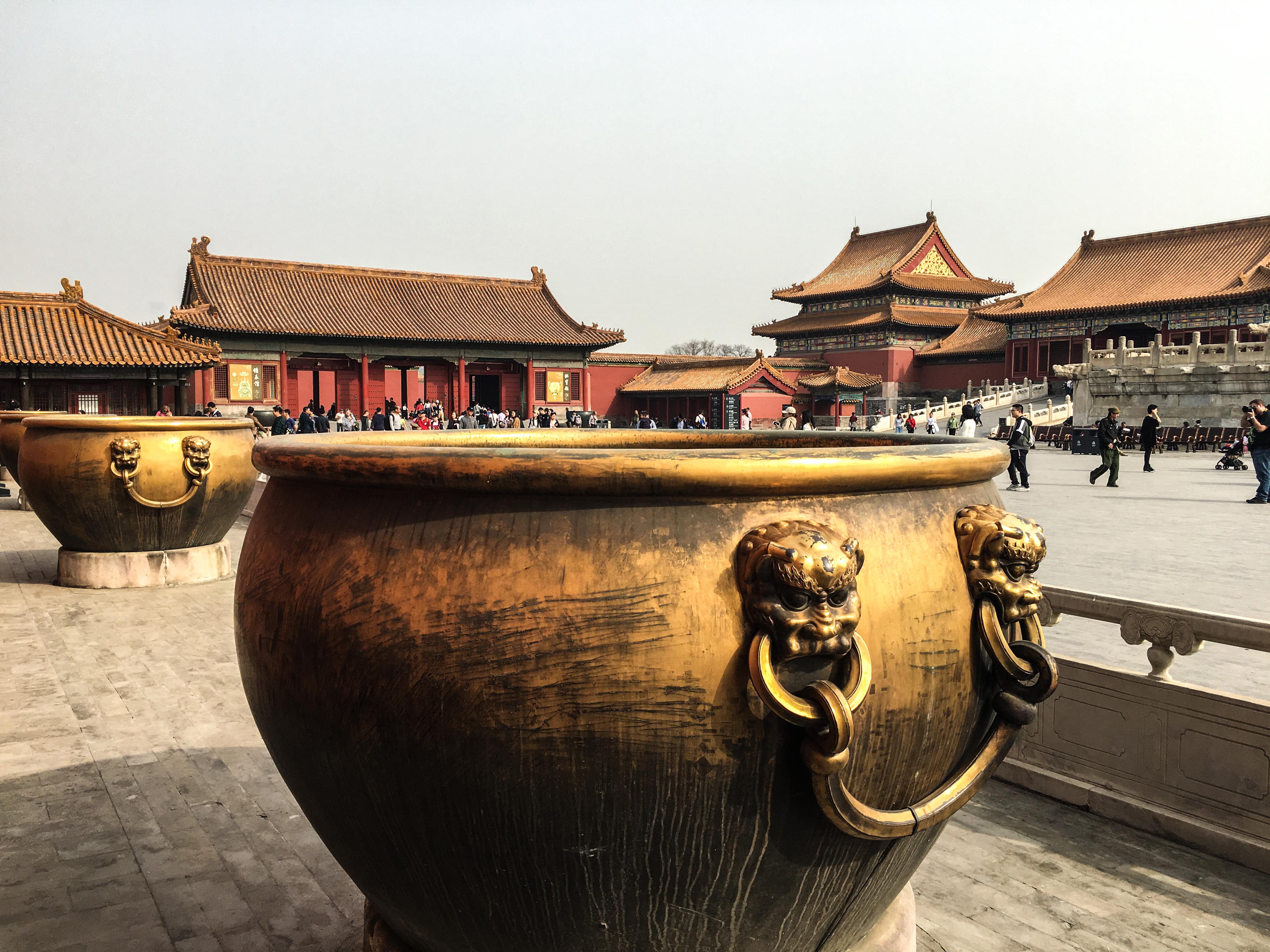A hundred years ago, I wouldn’t have been able to set foot in this place. Only royalty, concubines and eunuchs could wander about the Forbidden City. It’s from here that China’s emperors ruled, set law, and lived for 500 years until the abdication of the last emperor, Puyi. He was forcefully evicted from his home, together with what remained of his household, in 1924. The Forbidden City was opened to the public one year later.
Although now filled with visitors, the City still manages to have a dusty sense of forlorn abandonment. It’s not the buildings themselves – these are well maintained by a permanent group of restorers. But empty thrones are cordoned off, and most of the buildings lie vacant. As Chinese tourists mill about the courtyards sucking on ice lollies, it’s as if each building stands grieving for its previous royal status.
There are over 9000 rooms in the Forbidden City, but not many can be entered – only peeked into from their entrances. The buildings themselves are clustered like Russian dolls. Courtyard entrances lead into building complexes, which lead into other courtyard entrances, which lead into further complexes. It’s quite a confusing maze, and the names of each building don’t help, though they do hint at their previous lofty status. ‘Palace of Heavenly Purity’, ‘Hall of Central Harmony’, ‘Hall of Supreme Harmony’, ‘Palace of Earthly Tranquility’, and the list goes on.
At first glance, many buildings look the same. But in the Forbidden City, it’s the details that actually make the trip. And there’s plenty for history buffs, science lovers, and the endlessly curious. Here are six of my favourites.
1. Copper vats
These vats are a peek into what health and safety was like in China in the 1400s. There are about 300 dotted around the Forbidden City. Each one was kept full of water and used to put out any fires, which were quite common in the City as all buildings here are made out of wood. In winter, the vats were covered and charcoal was burnt continuously underneath them to keep the water from freezing.


